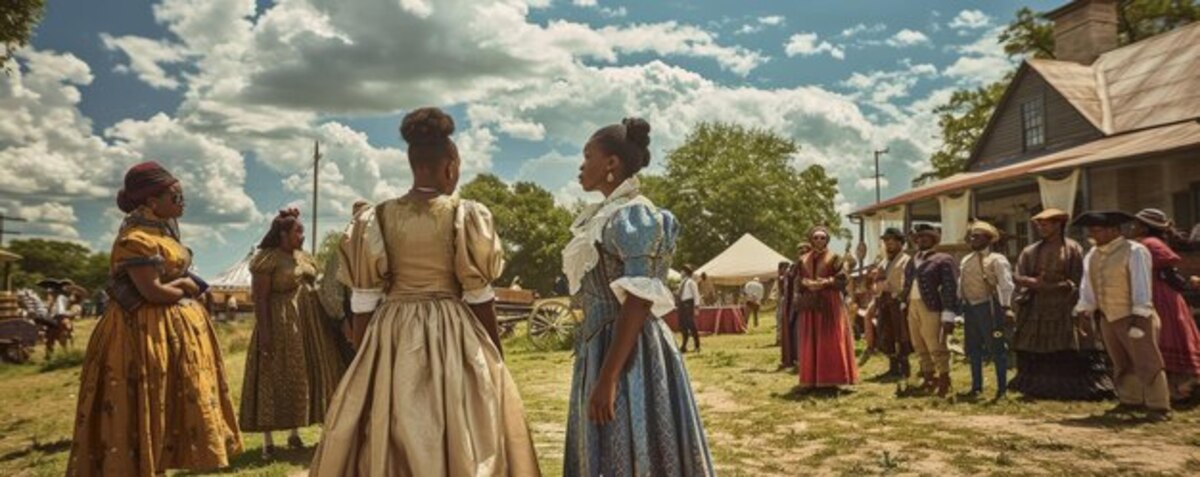The impact of local history on your property's value

The value of your property is not only determined by its physical location but also by the rich local history that surrounds it. The traditions, events, and historical figures that have shaped the place where you live can significantly influence the appeal and appreciation of your home. By understanding the impact of this cultural heritage, homeowners can make more informed decisions about their real estate investment. Let’s explore together how the history of your community can become a powerful ally in increasing the value of your property.
The connection between local history and real estate value perception.
The connection between local history and the perception of real estate value is a phenomenon that manifests in various ways. Properties located in areas with a rich cultural heritage tend to attract buyers who are looking for not only a home but also a narrative that complements their lifestyle. The history of a place can be a powerful draw; for example, neighborhoods with historic architecture or those that have been the site of significant events can spark the interest of those who value culture and traditions. This kind of historical context not only adds character to the property but can also translate into higher demand, potentially increasing its value in the market.
Additionally, the local history can influence the emotional perception of buyers. Communities with vibrant histories often foster a sense of belonging and pride among their residents, which is highly valued by those looking to settle in a place. Stories about illustrious figures or memorable events can become an integral part of the neighborhood's appeal, creating a unique atmosphere that attracts both families and investors. In this sense, understanding and highlighting these historical aspects can be key for homeowners who wish to maximize the value of their property and stand out in a competitive market.
2. Historical events that changed the course of your community
The historical events that have taken place in your community are not just stories of the past, but also shape the identity and character of the area. For example, an annual celebration that commemorates a significant milestone can attract visitors and new residents, generating a sense of belonging and pride among the inhabitants. This emotional connection translates into a greater interest in local properties, raising their value in the market. When potential buyers recognize that they are acquiring more than just a simple home — but also a part of history — this can be a decisive factor in their choice.
Moreover, historical events can influence urban development and community infrastructure. Areas where significant occurrences have taken place often receive investments to preserve historical sites or promote cultural activities, enhancing the quality of life for current and future residents. The restoration of landmark buildings and the creation of public spaces dedicated to these traditions can attract both tourism and new businesses. All of this not only beautifies the surroundings but also reinforces the heritage value of nearby properties by creating a vibrant and dynamic environment in which to live and invest.
3. Cultural traditions and their influence on the real estate market
Cultural traditions are an essential component of a community's identity and can have a direct impact on the real estate market. In many localities, annual festivals, craft fairs, or historical celebrations attract both visitors and residents alike, increasing the demand for housing in those areas. For example, a neighborhood famous for its carnival or its food fair may see an increase in interest from potential buyers who want to be part of that vibrant cultural experience. This appeal not only elevates property values but also fosters a sense of belonging and pride among residents.
Additionally, cultural traditions influence the general perception of the neighborhood. Communities with a rich cultural heritage often have more developed infrastructure and services that reflect their local customs and values. This can include everything from museums and community centers to theme parks celebrating local history. These features make properties more desirable for those seeking not just a place to live, but also a connection to the culture and history of the area. Thus, by exploring how traditions impact real estate valuation, owners can identify opportunities to enhance the value of their investments through cultural initiatives or by actively participating in community events that highlight the historical richness of the place.
4. The role of monuments and historical sites in property valuation
Historical monuments and sites are witnesses of the past that tell the story of a community, and their presence can be a decisive factor in property valuation. These structures not only beautify the environment but also generate a sense of identity and pride among residents. The tourist attraction they often exert can increase the demand for nearby housing, as many buyers seek to live in areas with a distinctive and culturally enriched character. Thus, properties located near these emblematic points tend to experience a faster appreciation in their value.
Additionally, historical monuments can influence urban regulations and conservation policies that directly affect the real estate market. Areas designated as heritage sites often have restrictions on the types of developments allowed, which can result in a limited supply of new constructions. This scarcity can increase the appeal of existing properties, thus driving up their value. On the other hand, living near these sites not only provides access to a rich cultural heritage but also enhances the quality of life by offering recreational spaces and opportunities for community events, making these areas desirable for future homeowners.
5. How local narratives attract potential buyers
Local narratives are a powerful resource that can capture the attention of potential buyers in the real estate market. When a property is associated with unique stories, legends, or significant events, it creates a sense of emotional connection that goes beyond the physical characteristics of the property. For example, a house located in a neighborhood famous for its historic architecture or for having been the home of prominent figures may be perceived as a piece of living history. This connection not only attracts those looking for a place to live but also those interested in acquiring a piece of cultural heritage.
Additionally, local narratives help build a strong community identity that resonates with potential buyers. By presenting stories about traditions, festivals, and the historical development of the area, a welcoming and attractive environment is created that invites investment. Buyers often value not only the physical space where they will reside but also the quality of life they can experience in that community. Thus, by highlighting these narratives in the sales process, homeowners can enhance the perceived value and increase the likelihood of finding interested parties willing to pay more for their home.
6. Strategies to highlight the history of your neighborhood when selling a property
To highlight the history of your neighborhood when selling a property, it's essential to have a compelling narrative that connects potential buyers with the surroundings. Start by researching and gathering information about historical events, notable figures, and local traditions that have shaped your community. This information can be presented in an informational brochure or even in a short video that accompanies the property visit. By sharing captivating stories about the neighborhood's history, you can spark an emotional interest in buyers, helping them envision their future in a place full of significance.
Additionally, consider organizing guided tours of the neighborhood that highlight its most relevant historical points. Inviting potential buyers to experience some of these iconic places firsthand will not only allow them to better appreciate the cultural richness of the area but will also create a deeper connection with the property for sale. Another effective strategy is to include testimonials from current or former residents sharing how the history of the place has positively influenced their quality of life. These approaches will help demonstrate that your property is not just a physical structure, but an integral part of a vibrant and engaging historical narrative, which can translate into a higher perceived value for buyers.
7. Successful cases: communities that have capitalized on their historical legacy
In various parts of the world, there are communities that have managed to transform their historical legacy into a driver of economic and social development. For example, the case of a small town that decided to restore its colonial buildings and create a historic district has attracted both tourists and new residents. These investments not only revitalized the local architecture but also boosted nearby businesses and increased property values in the area. The residents take pride in living in a place with history, which translates into a higher demand for properties that preserve that cultural charm.
Another notable example is that of communities that have organized annual festivals related to their cultural heritage. These events not only celebrate local traditions but also attract visitors and generate income for local businesses. Consequently, properties near these activities often see an increase in their value due to the ongoing interest from those looking to be part of that historical experience. Thus, by capitalizing on their historical legacy, these communities demonstrate how history can be a powerful tool to enhance real estate appeal and strengthen the sense of belonging among their residents.
8. The effect of historical tourism on residential development
Historical tourism plays a crucial role in residential development, as it can transform areas with a rich cultural heritage into attractive destinations for both visitors and residents alike. Properties located in historical areas often experience an increase in their value due to the demand generated by tourists interested in exploring local history. This phenomenon not only benefits current homeowners but also stimulates investment in infrastructure and services, which can result in community revitalization. By promoting cultural events, festivals, and historical tours, a vibrant atmosphere is created that attracts both tourists and new residents.
Furthermore, historical tourism fosters greater awareness of the importance of preserving local heritage. Homeowners can see how their investment is supported by community efforts to maintain and restore historic buildings, as well as by educational initiatives that highlight the cultural relevance of the area. This not only contributes to the aesthetic appeal of the neighborhood but also generates a sense of pride among residents. Consequently, those looking to acquire properties in historically rich environments tend to be willing to pay more, resulting in a significant appreciation of real estate value over the long term.
9. Future and sustainability: preserving history to increase added value
The preservation of local history is not only an act of respect for the past, but it also becomes a key strategy to increase the value of properties today. Communities that value and maintain their historical heritage often attract buyers interested in living in environments with character and authenticity. By preserving iconic buildings, monuments, and cultural traditions, unique spaces are created that provide a sense of identity to the locality. This emotional connection can be a determining factor for those seeking a home, which in turn elevates the value of the real estate market.
Moreover, sustainability plays a crucial role in this process. Incorporating sustainable practices while preserving local history not only protects cultural heritage but also responds to current demands from buyers for more responsible and environmentally friendly options. Restoration projects that use recycled materials or traditional techniques can be appealing both aesthetically and ecologically. Thus, by merging history and sustainability, owners not only safeguard their investment but also contribute to building resilient communities that are aware of the impact of their decisions on the future.



